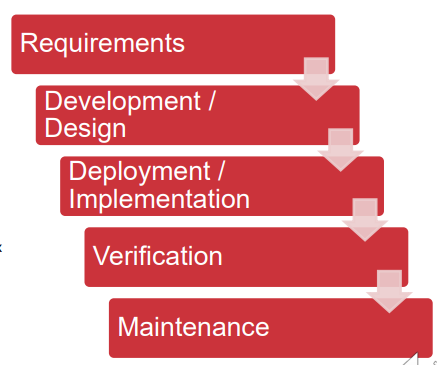Part 1 - Lecture 5
1/16
There's no tags or description
Looks like no tags are added yet.
Name | Mastery | Learn | Test | Matching | Spaced |
|---|
No study sessions yet.
17 Terms
What is a Bit in programming
a single one or zero
contraction of “binary digit”, also convenient for logical and algebraic information (Boolean “true”/”false”, pos/neg)
What is a Byte in programming
it is 8 bits
XOR (exclusive OR)
returns TRUE if either A or B is true, but not both
NAND (NOT AND)
returns TRUE unless both A and B are TRUE
NOR (NOT OR)
returns TRUE only when both A and B are FALSE
What is Imperative and Procedural Programming
Ex: FORTRAN, BASIC, Pascal, C, C++
Programs are a list of tasks, subroutines
Like a recipe: each step is a sequenced instruction
Procedural languages allow programmer to define functions, subroutines (procedures) and reuse throughout the program
What is Object-Oriented Programming
Ex: Java, Objective-C, VisualBasic.NET
Programs are a collection of interacting objects
Objects can have independent functions, characteristics, and states
A Class is a “blueprint” for an object – it describes the functions and characteristics that all objects in that class share in common
•Ex: “the class of all dogs”
A specific member of a class is an Instance
• Ex: “a beagle is an instance of a dog”
What is Software Development Life Cycle (SDLC)
Need for standard approach to
• Determine scope
• Organize programming tasks
• Determine testing requirements
• Manage resources & time commitments
• Deliver software on a reproducible schedule
The different phases of Software Development Life Cycle (SDLC)
Planning
Software Implementation (what we often refer to as “Software Development or Design”)
Testing – Verification vs. Validation
Documentation
Deployment (what we often refer to as “Implementation”)
Maintenance
SDLC Methodologies: Waterfall
Move to next phase only when prior phase is done

SDLC Methodologies: Spiral
“Risk oriented” software development
Development broken into smaller efforts
Each subproject designed to tackle an area of high-risk
Advantages: highest risk is tackled early on, when change is less expensive
SDLC Methodologies: Agile
High focus on very small steps, frequent loops
Regular testing and regular demo to users
Advantage: Extremely flexible; assumes that clients will change requirements and is equipped to adapt to unpredicted challenges
Client can change their mind on the spot and it will be easier to implement
Regression Testing
Regression is a new defect revealed with the addition of a new functionality
Ex: you add a new feature to a program, now an older feature stops working as intended – that’s a regression
Types of Qualitative Data:
Nominal aka “Categorical”
Think “data with names”
Mutually exclusive, unordered, discrete categories of data, such as patient smoking status
Mode (most frequently occurring value) is the only measure of central tendency
Types of Qualitative Data:
Ordinal
Think “ordered data”
• Data that have a natural ordering
• Ex: “Small”, “Medium”, “Large”
Types of Quantitative Data:
Interval
Data where the intervals between values represent the same distance
Example: Year, Temperature. The difference between 32°F and 33°F is the same as the difference between 76°F and 77°F
Types of Quantitative Data:
Ratio
Allows for additional comparison because “zero” means something and is not arbitrarily chosen
Ex: Area, distance.